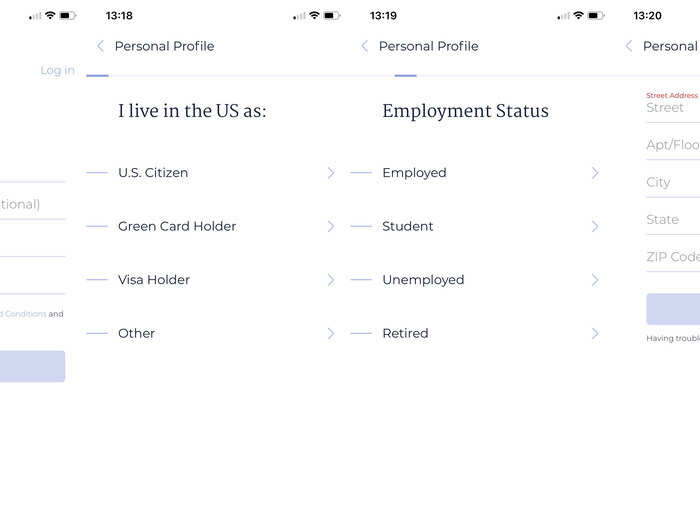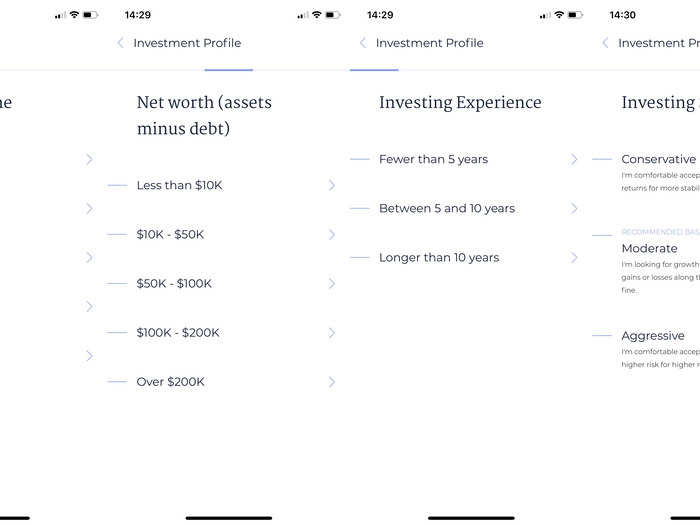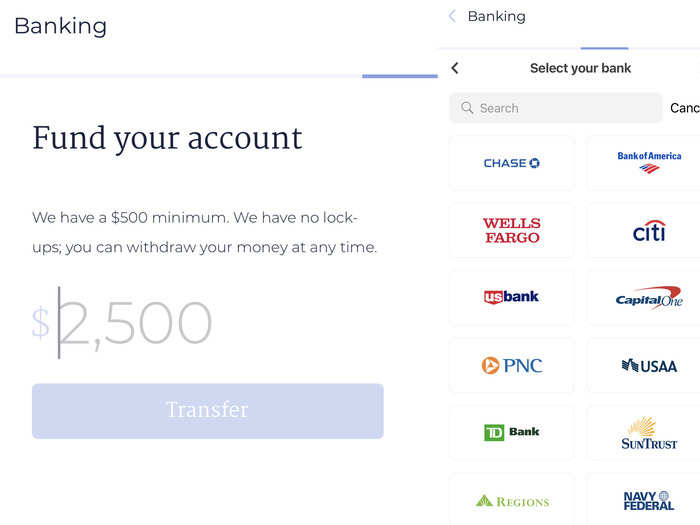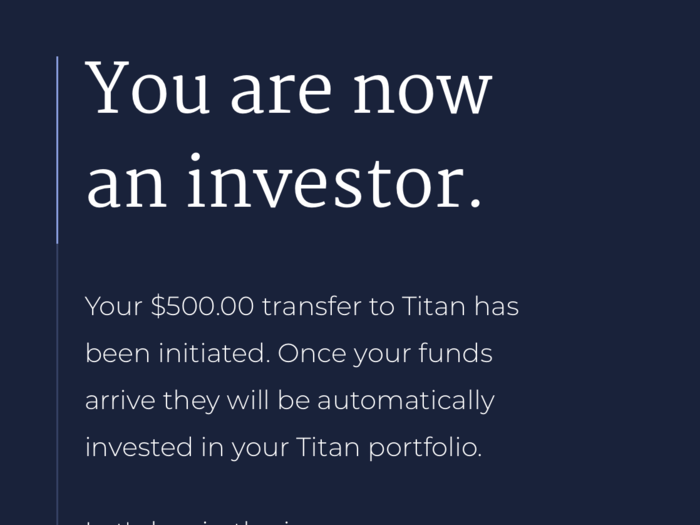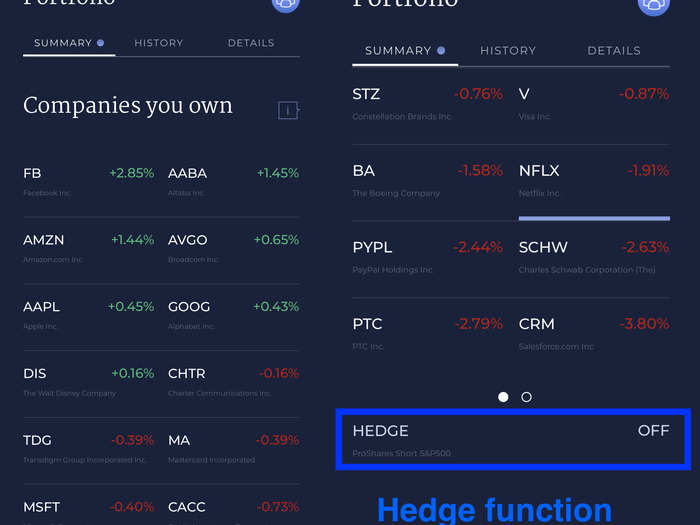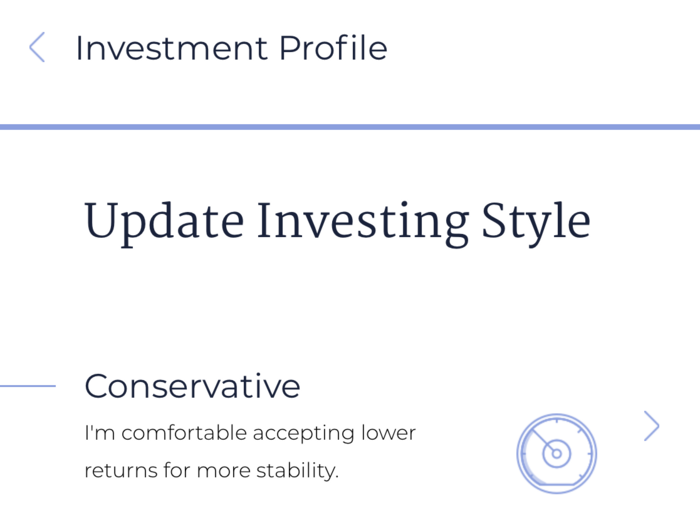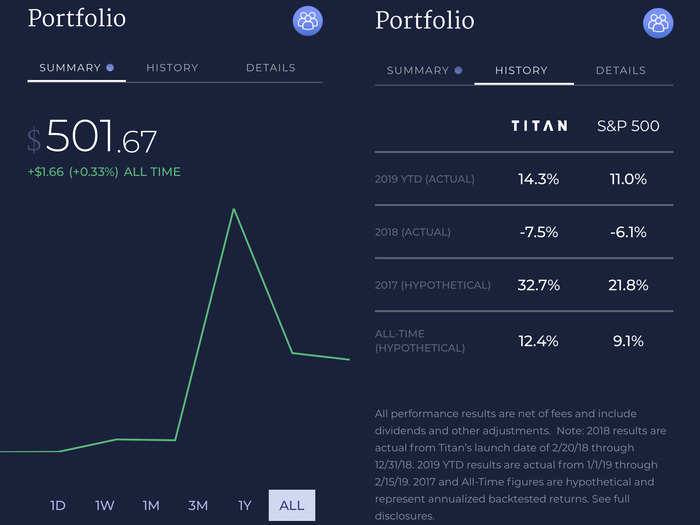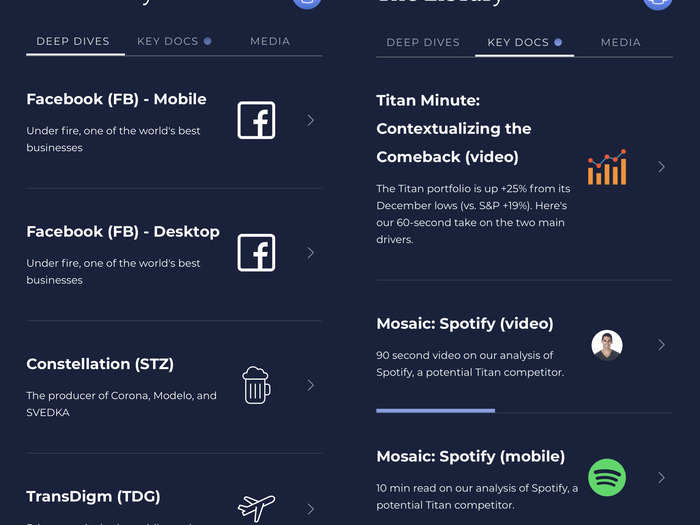After answering all personal and financial information, Titan asks you to deposit at least $500 before approving your account.
Titan has no lock-up period, and investors can withdraw their money at any time.
The $500 minimum fee is a prerequisite to gain access to Titan's research, fund management, networking events, and other services, co-founder Clayton Gardner told Business Insider.
Here's what a user's portfolio looks like.
The portfolio — a basket of 20 stocks — is the same for every Titan user and is updated once a quarter.
As you can see, the hedge function is off right now since markets are not in a downturn. When markets face extended selloffs, Titan will start to use a portion of the portfolio's money to bet against the benchmark S&P 500 index to reduce market exposure.
You can change your investing style to customize your portfolio's hedge level.
Titan personalizes users' hedge percentage based on the investing style derived from the questions they answer when signing up.
- Conservative = 20% of portfolio value is hedged
- Moderate = 10% of portfolio value is hedged
- Aggressive = 5% of portfolio value is hedged
Users can change their investing style once a month.
Here's the performance of Titan's portfolio.
On the left, you can see the performance of my portfolio.
On the right is the performance of all investment portfolios on Titan. Its fund has outperformed the S&P 500 so far this year. Last year, it underperformed the benchmark.
Starting a portfolio gives you access to Titan's equity-research library.
Titan is like a "smart money manager in the pocket," co-founder Clayton Gardner said, adding that its users can browse equity-research reports in a very mobile-friendly way.
All the research reports are produced by Titan's own team.
Titan has thousands of clients, mostly mid-career professionals ranging from 30-35 years old. It had $20 million under management as of October 2018, according to Gardner.

